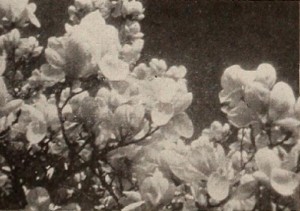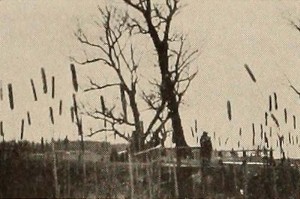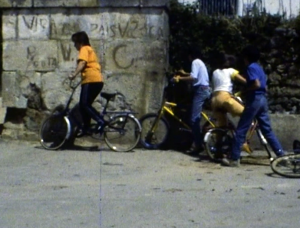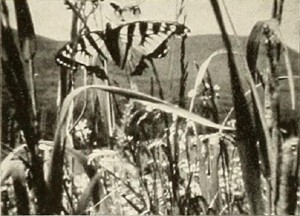"How tomatoes change from blossom to fruit -- Frame by frame shots of tomato blossom giving birth to tomato -- Care of tomato plants." UC San Diego Library.

"It is spring in Brooklyn, and Leo J. Heffernan has found a multitude of trees there. He opens the film with a sombre shot of New York's waterfront and skyline, to indicate the tense activity of a large city. A title suggests that those who live in the midst of this turmoil can find solace not far away. The film proceeds to the bounteous display of flowering trees in a large public park. Glowing shots of heavily laden branches against blue sky are interspersed with scenes of Sunday strollers wandering through shaded walks and falling petals. Mr. Heffernan has used to good effect his fine technical skill, and his color transitions between scenes are smoothly accomplished. Trees That Grow in Brooklyn is accompanied by a rhymed narrative written especially for the film by Mr. Heffernan." Movie Makers, Dec. 1946, 489.

"In Trees, whose subtitle describes it as a picture poem, we find what is generally admitted to be the masterpiece of that superb artist of the cinema, the late Ripley W. Bugbee, whose work so delighted his fellow members of the Amateur Cinema League and whose untimely death took from amateur cinematography one of its finest workers. This film is the realization of what Movie Makers has often counseled — setting film to music, instead of the course usually followed in theatrical pictures of setting music to film. The footage is planned to gear in with the musical setting of Joyce Kilmer's popular verse, but, since that setting is brief, other music, excellently chosen, is added to the scoring. The music of the poem is played once orchestrally, then other selections are offered, and the presentation concludes with a baritone voice singing the musical setting through completely. In this last part of the film, there is admirable synchronism, the scenes illustrating the words very accurately. Within the framework of this mechanism, Mr. Bugbee placed some of the loveliest 16mm. Kodachrome footage that has ever been accomplished. The motion is all that of nature, no persons appearing, but that motion has tempo and rhythm, as well as amazing beauty. There are trees in all kinds of movement, and to them are added scenes of clouds, moving water, grasses, flowers and birds. Without the record accompaniment, one would find, in Trees, Kodachrome footage of the highest order; with the musical addition, there is something that, within its limited scope, has never been bettered." Movie Makers, Dec. 1938, 597, 617.

Documental corto sobre el pueblo de Villa de Corres. El filme comienza con varios paisajes de los alrededores y planos de montañas y el río. A continuación se muestra el pueblo, aparecen casas, el río, calles y algunas partes características como el Castillo, el hospital, la iglesia de San Esteban, el bebedero, la fuente , la plaza, etc. También aparecen algunas personas mayores y niños por las calles. Se comenta que es un pueblo con una población de 30 habitantes pero que es uno de los pueblos más longevos de la provincia de Álava.
Short documentary about a town called Villa de Corres. The film begins with several landscapes of the surroundings and shots of the mountains and the river. Then the film shows the town, houses, the river, streets, and some landmarks like the Castle, the hospital, the San Esteban church, the drink fountain, the fountain, the square, etc. Some older persons and children are also seen. It is said that the town only has a population of 30 persons, but that it is one of the longest-living towns in the Alava province.

"Robert P. Kehoe, who won Honorable Mention last year with Chromatic Rhapsody, has "done it again" — only more so. In Wildflowers, with his own inimitable magic, he has gathered into light and color all the lazy loveliness of high summer. Here, as if he talked their secret language, bees drone and butterflies dance before his lens. Daisies and buttercups, the wild geranium and "butter and eggs" — a dozen flowers you do know and a score you have forgotten — nod in the warm sun with simple and unassuming beauty. Often, six blades of grass and a single bloom will comprise a moment of ineffable gaiety and song. The rough wood of a slanting black post gives accent to a field of daisies, or the delicate tracery of a "four o'clock" is a breath taking frame for a summer sunset. In Wildflowers, Mr. Kehoe has written once again a lyric testament to nature's incomparable loveliness." Movie Makers, Dec. 1940, 600.
Total Pages: 6